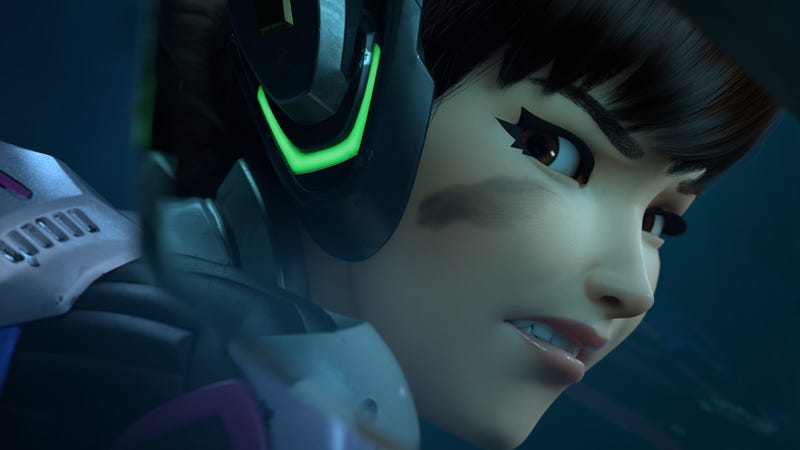
74 percent of adults who play games online have experienced some form of harassment, according to a new report released today.
The report, published Thursday by the century-old civil rights nonprofit organization Anti-Defamation League, offers some staggering statistics on the prevalence of trolling, threats, discrimination, and just plain rude name-calling in online gaming. Alongside a survey of over 1,000 people who play games, the ADL also looked at game publishers’ moderation of those spaces, and found them wanting.
“Large-scale commercial games have these aspects of their platform that are totally unmoderated spaces,” said Daniel Kelley, the associate director of ADL’s center for Technology and Society, to Kotaku. “We know from places like 4chan or 8chan that unmoderated spaces become toxic.”
How toxic? Some of the numbers that came from the study, conducted in April of this year, are mind-boggling. 65 percent of the players surveyed experienced “severe harassment,” which includes “physical threats, stalking and sustained harassment” while gaming online. 29 percent said that at some point, they had been “doxed” as a result of a game, which the study defines as a stranger publishing private information about them.
Advertisement
About a third of LGBTQ players believed that they were harassed because of their sexual orientation. A third of black or African-American people surveyed, as well as a quarter of Latinx and Asian-American people, say they think they were harassed because of their ethnicity. Women were the most-harassed demographic—probably because women’s voices can be identifying in games’ voice chats—with nearly 40 percent having reported harassment based on gender.
The Anti-Defamation League decided to investigate problem of online gaming harassment after noticing the relative lack of strong data on it, and similar organizations’ reluctance to tackle the topic, Kelley said. “There’s a sense that there’s a problem here. I’d read about it but hadn’t talked to the community. Is this something that had been hyped up in the media and was not real?”
Advertisement
Another thing the ADL found was that not all games are created equal when it comes to harassment in their social spaces. Among the top games that the ADL found to foster harassment were Dota 2, Counter-Strike: Global Offensive, Overwatch, PlayerUnknown’s Battlegrounds, and League of Legends. Dota 2 was the top game players said they had stopped playing because they didn’t want to deal with others’ rude antics.
And while 80 percent of players said that they had, at some point, experienced positive social interactions in a game—with World of Warcraft, Minecraft and NBA 2K being the leaders in happy moments—that number dropped to just 37 percent when talking about Riot’s League of Legends.
Advertisement
Kelley said that games haven’t caught up with other online services in terms of their approach to dealing with harassment. Over the last decade, as social media has become a confluence of big business and mass culture, companies like Facebook and Twitter have begun outright denouncing hate speech and harassment on their platforms. “There’s an expectation that if you’re on Facebook, Twitter, Twitch, any text thing—there’s some form of moderation,” Kelley said. “I was looking at both Fortnite and League of Legends’ [current] policies around harassment and looking at Twitter’s in 2006 and they seem to be carbon copies of each other.” While games also include voice chat as well as text, Kelley said that harassment occurred pretty much equally between both methods of communication.
Of the game players surveyed, 35 percent admitted to doing the bad behavior themselves, whether it be simple trolling or calling other players offensive names.
Advertisement
Perhaps the most shocking revelation from the report was its findings about how often gamers encounter extremist or white supremacist talk in games. “Almost a quarter of online multiplayer gamers (23%) have been invited to discuss or have heard others discussing the ‘superiority of whites and inferiority of non-whites’ and/or ‘white identity/a home for the white race,’” the study reads. “While this result does not necessarily imply that players were being recruited to join a white supremacist organization in any online game, the prevalence of expressions of white supremacy in online games suggests that this hateful ideology may be normalized in some game subcultures.”
The ADL suggested that the Entertainment Software Ratings Board, the organization that puts age ratings on video games in the United States, reconsider its rating system. Kelley notes that, while the ESRB looks at the nudity in a game or the specific types of violence, they don’t take into account what players do online. “They pass the ball on, ‘What are the online interactions like?’ If you look at, for instance, Fortnite, that’s T-rated, but 70 percent of folks are experiencing harassment, according to our study,” he said. “You also need to look at stuff like, ‘How is the reporting system? Does it happen in-game or out of the game?’”
Advertisement
Gamers’ humor can be a bit extreme. We tend to take it for granted that someone might think it’s funny to type “kys,” or “kill yourself,” in an online game for laughs. But even if the behavior is done in a joking manner, Kelley said, it’s important to put a spotlight on it. “Games are mainstream,” he said. “It’s important to call that out, that it is not normal. It is not acceptable to tell someone to kill yourself. There’s a value in reflecting back to folks who may say this is normal. But as part of broader society, is that a part of the values we want to enshrine in this growing medium?”
https://kotaku.com/74-of-adults-have-been-harassed-while-gaming-online-s-1836678162
2019-07-25 10:00:00Z
52780339373197
Bagikan Berita Ini















0 Response to "74% Of Adults Have Been Harassed While Gaming Online, Study Says - Kotaku"
Post a Comment